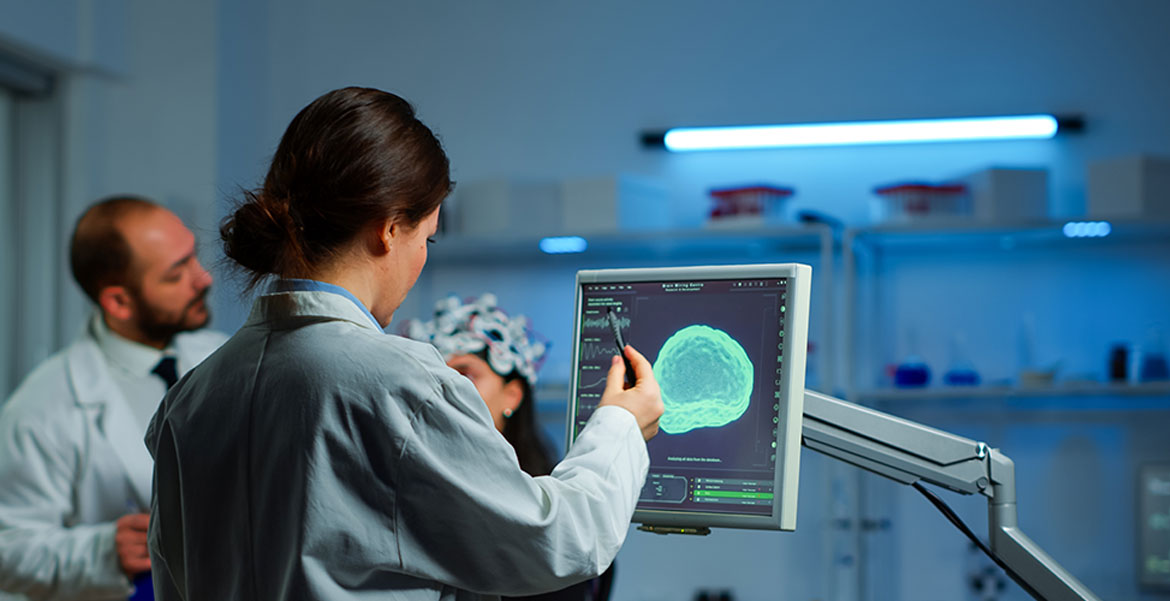Cancer Treatment Types: What they are and how are they administered
Today there are various types of cancer treatments available in the field of medicine and the type of treatment and the drug is decided by your oncologist based on the type of cancer, stage, your age etc. Some people with cancer will have only one treatment. But most people have a combination of treatments, such as surgery with chemotherapy and/or radiation therapy. Feel free to discuss with your doctor the different treatment options, their implications, duration, efficacy etc.
In this article we would be discussing the different types of cancer treatment, what they are and their mechanisms. So, let’s get started!
1. Surgery- this is the most common and oldest type of cancer treatment available. Surgery works best for solid tumors that are contained in one area. It’s a localised treatment protocol, meaning that it treats only the part of your body with the cancer.
How does surgery help with the treatment of cancer?
It helps by removing the entire or part of a tumor from the specific part of the body, therefore arresting its growth. It helps in making the other treatment work well; to diagnose; to restore the body’s function and to help manage side-effects.
Types of surgeries:
● Biopsy- is the diagnostic surgery performed to detect the type of tumor and stage, to know if the tumor is metastatic or benign.
● Tumor removal- this is commonly used to remove the tumor and some of the nearby healthy tissue. Tumor removal may be the only treatment. Or it may be used with other treatments, such as chemotherapy or radiation therapy.
● Reconstruction surgery- after the main surgery to remove a tumor, people may choose to have another surgery to restore the body’s appearance or function. This is called reconstructive or plastic surgery. Reconstructive surgery may be done at the same time as surgery to remove the tumor. Or it may be done after a person has healed or received more treatment. Example, breast reconstruction surgery after mastectomy.
● Preventive surgery- Surgery is also done to lower the risk of getting cancer. For example, doctors often suggest the removal of precancerous polyps in the colon to prevent colon cancer. In addition, women with a strong family history of breast or ovarian cancers or known mutations in the BRCA1 and BRCA2 breast and ovarian cancer genes may decide to have breast removal surgery or removal of ovaries respectively.
● In open surgery, the surgeon makes one large cut to remove the tumor, some healthy tissue, and maybe some nearby lymph nodes.
● In minimally invasive surgery, the surgeon makes a few small cuts instead of one large one. The surgeon will insert a long, thin tube with a tiny camera into one of the small cuts. This tube is called a laparoscope. The camera projects images from the inside of the body onto a monitor, which allows the surgeon to see what she or he is doing. There is a use of special surgery tools that are inserted through the other small cuts to remove the tumor and some healthy tissue.
Complications related to surgery:
● Pain
● Infection
● Fatigue
● Swelling at the site of operation
● Some types of surgery may change how your body metabolises food. Surgery can also affect eating if you have surgery of the mouth, stomach, intestines, or throat. For example, the surgery performed at the site of your intestines might affect nutrient absorption. In cases like these, it’s better to talk with a specialised nutritionist.
2. Radiation Therapy
Radiation therapy is a type of cancer treatment that uses beams of intense energy to kill cancer cells. Radiation therapy most often uses X-rays, but protons or other types of energy are also used if required.
How does Radiation Therapy help against cancer?
Radiation works by damaging the DNA present inside the cells. This damage keeps the cancer cells from growing and dividing, eventually causing cell death.
Types:
● External Beam Radiation Therapy
This type of radiation therapy is usually a local treatment. This means it’s usually aimed at and affects only the part of the body needing treatment. Radiation treatments are planned so that they damage cancer cells with as little harm as possible to nearby healthy cells.
● Internal Beam Radiation Therapy
Internal radiation therapy is a treatment in which a source of radiation is put inside your body. The radiation source can be solid or liquid. Internal radiation is also called brachytherapy. A radioactive source is put inside the body into or near the tumor. With some types of brachytherapy, radiation might be placed and left in the body to work. Sometimes it’s placed in the body for a period of time and then removed. This is decided based on the type of cancer.
● Systemic Radiation Therapy
This type uses radioactive substances that are given in a vein or by mouth. Even though this type of radiation does travel throughout the body, the radioactive substance mostly collects in the area of the tumor, so there’s still little effect on the rest of the body.
Side effects of Radiation Therapy:
Common side effects:
● Fatigue
● Skin changes
Head and neck
● Dry mouth
● Thickened saliva
● Difficulty swallowing
● Sore throat
● Changes in the way food tastes
● Nausea
● Mouth sores
● Tooth decay
Chest
● Difficulty swallowing
● Cough
● Shortness of breath
Abdomen
● Nausea
● Vomiting
● Diarrhea
Pelvis
● Diarrhea,
● Bladder irritation
● Frequent urination
● Sexual dysfunction
All these symptoms can be effectively managed with a holistic approach by bringing about proper lifestyle changes through food, body and mind.
3. Chemotherapy
Is the most common type of cancer treatment seen today. It’s a powerful chemical used to kill fast-growing cells in your body. There are different types of chemo drugs available for different types of cancer and your oncologist would be the best person to decide the type and the dosage of the drug. Chemotherapy is often used in combination with other therapies, such as surgery, radiation, or hormone therapy.
Just like other treatments, chemotherapy also induces various side-effects:
Common side effects of chemotherapy drugs include:
● Nausea
● Vomiting
● Diarrhea
● Hair loss
● Loss of appetite
● Fatigue
● Fever
● Mouth sores
● Pain
● Constipation
● Easy bruising
● Bleeding
Many of these side-effects can be prevented or treated. Most side-effects subside after treatment ends. Talk to your doctor or other healthcare professionals like nutrition/ yoga therapists on combating these side- effects.
There’s also the risk of long-lasting effects that may develop even years after treatment, depending on the type of chemotherapy used.
These effects could include damage to the:
● heart
● kidneys
● lungs
● nerves
● reproductive organs
It’s not that everyone who has undergone chemo will end up having long term side-effects. Before beginning the treatment, talk to your doctor about the possible risks and the symptoms you should be aware of.
How is chemotherapy performed?
Chemotherapy is typically given in pill form or directly into veins by injection or an IV. In addition to these two forms, chemotherapy may also be administered in several other ways.
Chemotherapy delivery options include the following:
● Chemotherapy can be delivered directly into the tumor, depending on the tumor’s location. If you undergo surgery to remove the tumor, your doctor can implant slow-dissolving discs that release medications over time.
● Some skin cancers can be treated with chemotherapy creams.
● Chemotherapy can be delivered to a specific part of the body through localized treatment, such as directly into the abdomen, chest, central nervous system, or into the bladder through the urethra.
● Some types of chemotherapy can be taken by mouth through pills.
● Liquid chemotherapy drugs- this is the most common type of chemo treatment today and it can be delivered in single shots, or you can have a port installed where a needle is inserted for each treatment. The infusion method with a port only involves pain at the injection site during the first visit, but the port needle can loosen depending on your level of activity.
Where you receive treatment depends on your chosen delivery method. For instance, if you use creams or pills, you can give yourself treatments at home. Other procedures are usually performed at a hospital or a cancer treatment center.
Your chemotherapy schedule, as in how often you receive treatment, will be customized for you. It can be changed if your body doesn’t handle the treatment well, or it can be increased or decreased depending on how well the cancer cells react to treatments.
Immunotherapy
Immunotherapy is a type of cancer treatment that boosts the body’s natural defenses to fight cancer. It uses substances made by the body or in a laboratory to improve how your immune system works to find and destroy cancer cells.
This can be done in a couple of ways:
● Stimulating, or boosting, the natural defenses of your immune system so it works harder or smarter to find and attack cancer cells.
● Making substances in a lab that are just like immune system components and using them to help restore or improve how your immune system works to find and attack cancer cells.
In the last few decades immunotherapy has become an important part of treating some types of cancer.
How does immunotherapy help to fight cancer?
Cancer can commonly get around many of the immune system’s natural defenses, allowing cancer cells to continue to grow. Our immune system consists of a complex process our body uses to fight illness. This process involves your cells, organs and proteins.
Different types of immunotherapy work in different ways. Some immunotherapy treatments help the immune system stop or slow the growth of cancer cells. Others help the immune system destroy cancer cells or stop the cancer from spreading to other parts of the body. Immunotherapy treatments can be used alone or combined with other cancer treatments.
There are many types of immunotherapy. They include:
● Monoclonal antibodies and tumor-agnostic treatments, such as checkpoint inhibitors
● Oncolytic virus therapy
● T-cell therapy
● Cancer vaccines
The type of drug, dose and treatment schedule will depend on many factors. These can include the type of cancer, size, location and where it has spread. Your age, general health, body weight and how well you can cope with side effects are also important. Talk to your healthcare team about why they recommend a specific immunotherapy plan.
Side effects:
Just like other types of cancer treatments, immunotherapy also affects the healthy cells along with cancer cells. Therefore causing symptoms such as:
Some side effects are common with all types of immunotherapy. For instance, you might have skin reactions at the needle site, which include:
● Pain
● Swelling
● Soreness
● Redness
● Itchiness
● Rash
● Fever
● Chills
● Weakness
● Dizziness
● Nausea or vomiting
● Muscle or joint aches
● Fatigue
● Headache
● Trouble breathing
● Low or high blood pressure
References:
https://www.cancer.net/navigating-cancer-care/how-cancer-treated/surgery/what-cancer-surgery
https://www.cancer.gov/about-cancer/treatment/types
https://www.cancer.org/treatment/treatments-and-side-effects/treatment-types/radiation/basics.html
https://www.mayoclinic.org/tests-procedures/chemotherapy/about/pac-20385033
https://www.cancer.net/navigating-cancer-care/how-cancer-treated/chemotherapy/understanding-chemotherapy
Tags: cancer treatment, cancer, types, surgery, biopsy, Reconstruction surgery, tumor removal, preventive surgery, open surgery, minimally invasive surgery, complications of surgery, radiation therapy, types of radiation therapy, Internal Beam Radiation Therapy, external Beam Radiation Therapy, Systemic Radiation Therapy, side effects of radiation, chemotherapy, side effects of chemo, immunotherapy, side effects of immunotherapy, Monoclonal antibodies and tumor-agnos









